
The Hungarian Government's coronavirus task force is yet to answer a single question from Telex, our photographers are not allowed in hospitals, and the paramedic services do not respond to us – in the middle of a pandemic, in Telex's experience, the function of the media of getting information to the public is heavily hindered.
The second wave of COVID-19 has hit Hungary way worse than the first one. We have thousands of new cases each day, more people are hospitalised than ever before, and deaths exceed all previous numbers.
Of course, this is not unique to Hungary, most countries in the world are hit equally bad by the pandemic, however, even within the European Union, there are great differences in how much, and what quality of information the public gets about the situation. Just a couple of examples of what we mean:
- What happens in the hospitals during the pandemic,
- How patients are treated,
- How medical workers are holding up,
- What incredible and heroic battle they fight,
- How overburdened doctors are,
- How many of them have contracted the virus.
One of the core functions of journalism is to inform the people about current affairs, to relay information about reality to readers and viewers.
This function is of vital importance during a pandemic, but in the experience of the staff at Telex, it is next to impossible to get information from the state-funded healthcare system and members of this system such as doctors, nurses, paramedics, and the healthcare administration, even though Telex reaches approximately 400-500 thousand people each day, and we are committed to writing factual information.
We don't mean to pry, we just want to show what is happening
We are fully aware of the fact that the healthcare system is going through an extraordinary situation, and in no way do we want to pry or show patients in undignified situations or doctors and nurses at their wits' end. Our goal is to show reality, the heroism of healthcare workers, the hundreds of tragedies each day, or the happiness after recoveries. In essence, we want to document the reality of these historic months.
The informational function of the media is especially important during a pandemic when many still insist that the virus is just a hoax.
Of course, in line with the special rules in effect, when we request a photo permit, we do not expect to just walk into the coronavirus ward in our street clothes and take pictures and videos of everything and anything. We want to cooperate with those in charge, and do our jobs during this once-in-a-century pandemic following all the precautionary guidelines.
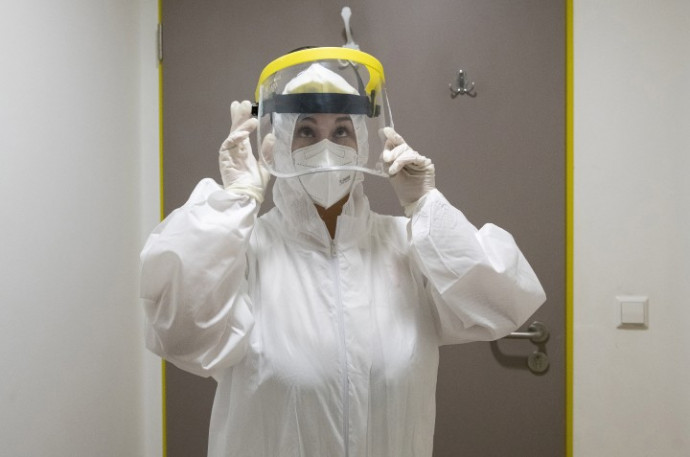
In theory, the Hungarian state is committed to informing its people about the pandemic, at least in the Fundamental Law of Hungary, it reads:
"Hungary shall recognise and protect the freedom and diversity of the press, and shall ensure the conditions for the free dissemination of information necessary for the formation of democratic public opinion."
Still, ever since our site launched on 2 October,
- We have sent 225 questions to the government's coronavirus task force, and have not received a single answer. It's not only that they are not reading our questions during the online press conference – we are not getting answers in any other way, shape, or form either, even though we specifically request in each of our letters that they answer in writing if, due to a lack of time we presume, they omit our questions from the press conference.
- We have requested photo permits from 12 healthcare institutions on 31 occasions so we could show how frontline workers live each day – we were never granted permission.
- We asked the Hungarian Paramedical Service 15 questions on six separate occasions, and we have asked for comments twice. We were refused once, but for the rest of our letters, we have not even received an answer.
Of course, during a pandemic, the healthcare system is overwhelmed, journalists and photographers running around in a hospital can complicate things even further, not to mention the legal implications. At the same time, as you can see on the pictures below, it is still standard practice for news outlets in international media to report from hospitals.
(The article continues below the pictures)
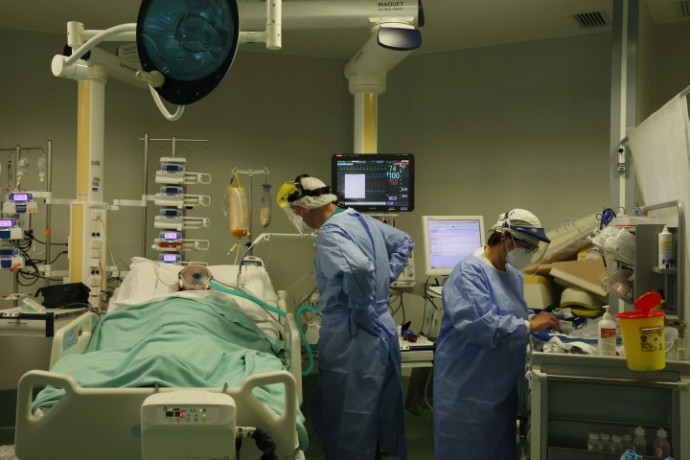
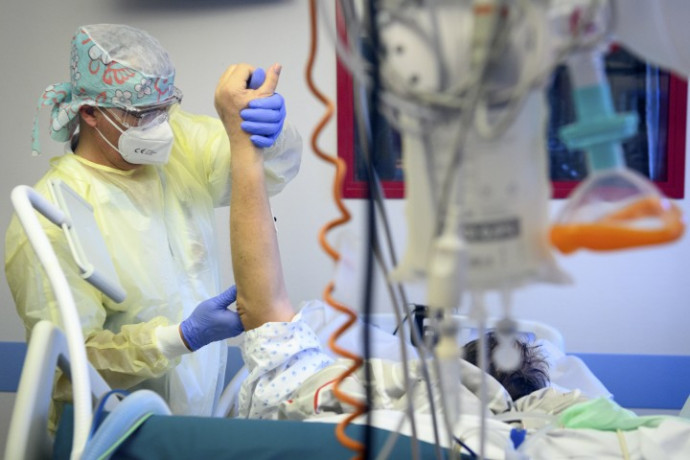
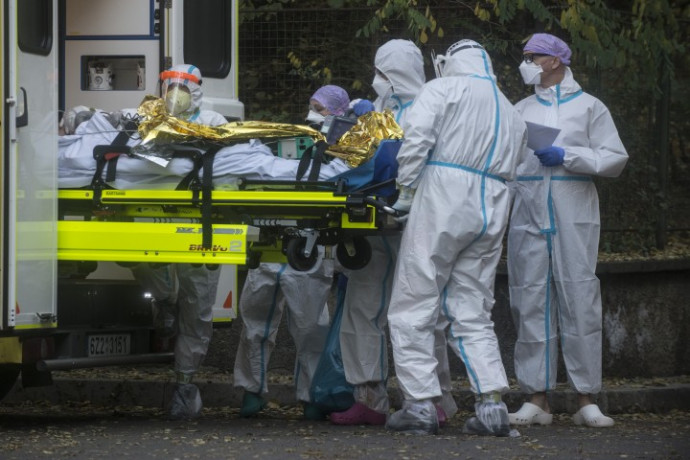
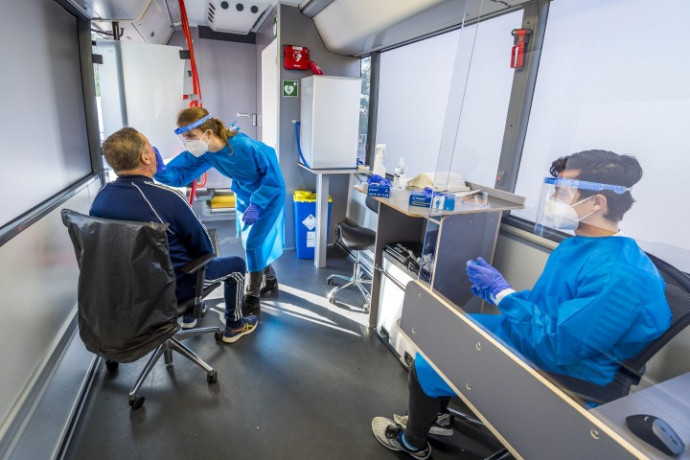
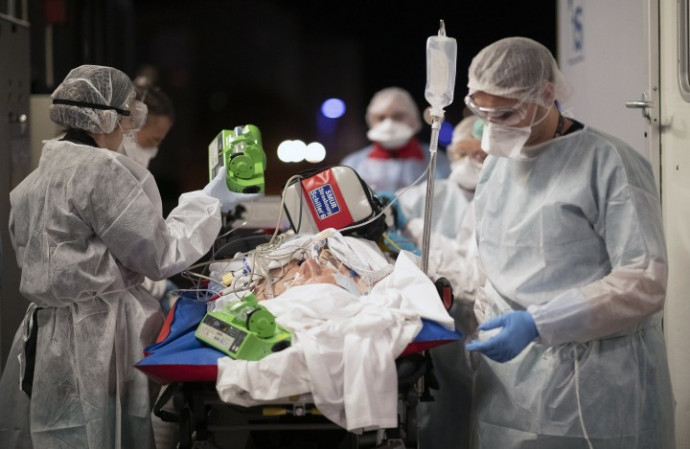
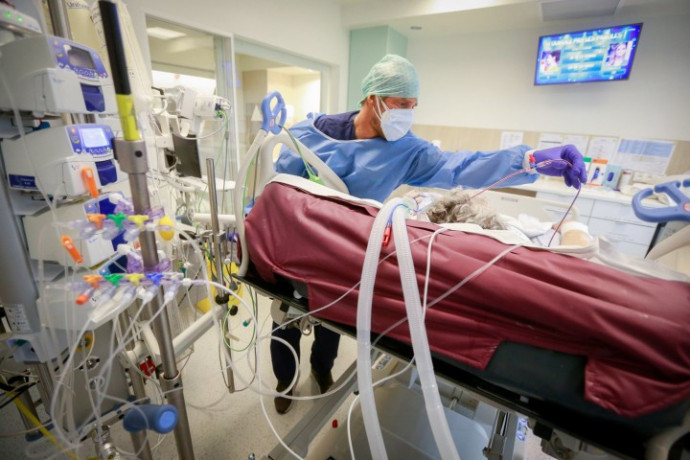



During the first wave, even photographers of the state newswire MTI were allowed into hospitals, and their photos could be used by news outlets subscribing to their service. During the second wave, they only had two sets of pictures: Two shots about the use of remesdivir in a hospital in Debrecen, and 31 frames from the COVID-19 ward of the Nyíregyháza hospital months later, on 27 November.
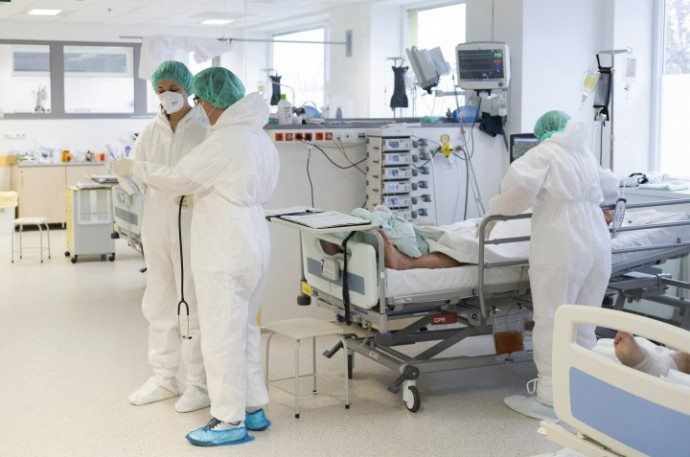
But like this, the world behind the hospital gates stays hidden from the public. Telex will not give up, we will keep on asking questions, we will be persistent and committed to our calling because we firmly believe in the social function the media is supposed to perform in a working democracy: Informing the people about the important matters that affect their lives, keeping a check on power, and holding them accountable.
Elsewhere, journalists do their jobs because they are allowed to
But there are hardly any hospitals in Europe that are not operating near peak capacity, yet they do not shut the world out. In several countries, it's no problem to photograph coronavirus wards, paramedics, and testing facilities, and even reporters are allowed near the events that are happening. Journalists are often allowed access to hospitals so they can raise awareness of the proportions of the pandemic and urge all to obey the preventive measures – stay at home, wear a mask if you don't, wash your hands regularly, do social distancing, just to name a few.
A couple of days ago, Free Europe reported from a Ukrainian hospital, and back in March, Sky News showed shocking footage from a Bergamo hospital:
Euronews interviewed nurses and recorded videos in Charleroi, Belgium:
With footage from a Liverpool hospital, BBC showed how severe the situation can get in a city if preventive measures are not taken seriously:
What we experience
Our photo permits were denied for various reasons by hospitals. Mostly they said nobody can enter apart from patients and healthcare workers. One hospital linked our photo permit to the prior approval of the National Healthcare Service Centre, who ultimately denied our request, other institutes pointed towards recommendations of Chief Medical Officer Cecília Müller and/or the Public Health Centre when rejecting us.
Ever since we launched Telex in October, we have sent questions for the daily online press conferences of the government's coronavirus task force on 23 days, 225 questions altogether, so on the days when we sent inquiries, we had ten questions on average. Telex had 5 questions on average for each press conference.
"How many hospital beds are available for COVID-19 patients in Hungary?" We have sent this question to the task force eight times, continuously between 2 November and 11 November, yet we received no answer.
Another question we asked on multiple occasions was this: "How much time does it take for a fatality to appear in the statistics published by the Coronavirus Press Office/task force?" We asked this ten separate times over two weeks but to no avail.
We often wanted to find out data that was not published on the official coronavirus website, and sometimes we requested explanations for data that seemed strange without a wider context, for instance, in recent days, we often asked why there are tens of thousands more active cases than people in quarantine.
We asked for photo permits from 12 different healthcare institutes (SOTE, Honvéd Hospital, Central Hospital of Southern Pest, the hospitals in Ajka, Szekszárd, Kiskunhalas, Vác, Cegléd, Esztergom, Hatvan, Baja, and Nyíregyháza), the National Healthcare Service Centre, the Chief Medical Officer, and the National Paramedical Services. We have sent them 31 separate permit requests to show our readers the frontline of the battle against the pandemic. We did not get permission to do so.
Flóra Dóra Csatári, journalist